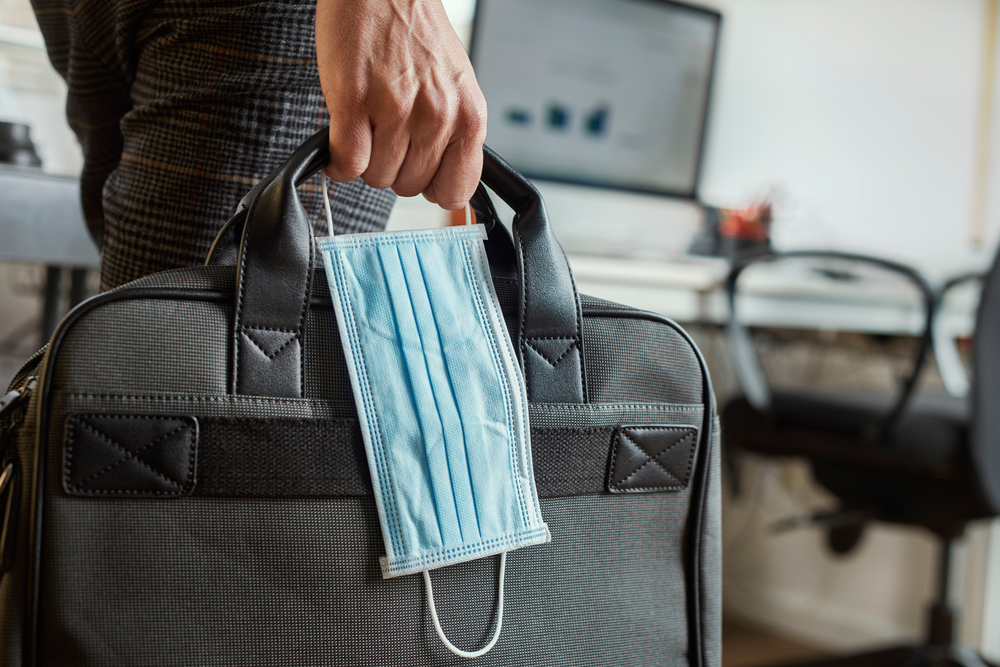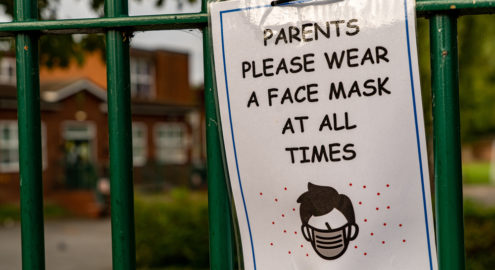Impact
Adapting Security in the Time of Pandemic

It’s been two years since COVID-19 first appeared in the United States. Since we’ve learned to live with the pandemic, things are changing once again. Business sites that have been closed for quite some time are opening back up, and remote workers are transitioning back to the office. Some workers who were hired during the pandemic may never have even been on site.
All of this presents unique challenges when it comes to physical security policy and procedures.
Need help with COVID 19 security procedures? Contact us now for a demo.
Tips for getting back to work during COVID
As your employees come back to work, re-onboarding people is going to be vital. Every employee — even those who have been working for your organization for a while — will need to be reoriented. They’ll need an update on security procedures, company policies, company cultures, and may even need a tour of the site, especially if any changes have been made while they’ve been working remotely. Your team will need to make sure everyone has working badges and that the workforce is updated on any new or changed policies.
The real work of reopening a site, however, starts well before orientation day. Your security team should be active as soon as the company decides the workforce is coming back to work.
Talk to department heads: As soon as the decision is made to reopen a site, the head of security should start talking to their peers in Human Resources, Information Technology, and other management positions. What security concerns are keeping them awake at night? What could go wrong when employees return? Gather a list of all the concerns management has, and prepare plans to address each of them. A good security manager knows there will be surprises when people come back to work, but a great security manager plans for it.
Revisit security policies: The reopening of a site is an opportunity to revisit your security policies. Did they work well in the past? How can you change your policies to make them stronger? How can they be modified to include COVID 19, masking, social distancing? Include a plan for testing employees’ competency in these new policies.
Check your countermeasures: It’s been a couple of years, so now is the time to check your equipment. Have fire extinguishers been inspected? Are your cameras working? Are lights in good working order? Be sure everything is in good shape before people are back on site.
Get people used to new security — and get security used to the site: If you’ve hired new security officers, make sure they’re doing the rounds during the first few weeks of work so that employees are used to seeing them. Also be sure new officers know the site well before reopening.
Be ready for reports of theft: As people come back to work, they’re likely to report that some of their things are missing. Some of those reports might be mistakes — maybe people brought supplies home and forgot. Others will be real.
Understand that people are on edge and small things might trigger them: A simple thing like a favorite desk chair disappearing or ending up at another desk may end up causing a stressed worker to blow up. Be ready for these incidents and ready to work closely with HR.
Be ready for motor vehicle accidents: Some people aren’t used to driving after a couple of years at home, so you might see more fender benders in your parking area. Be ready with working cameras, good lighting, and security nearby.
Know that IT will have its hands full: There will be plenty of calls to the help desk in the first few weeks. People won’t remember passwords, won’t be able to connect to the printer, and will have other issues with their machines. Be sure all cybersecurity prep work, updates, and patches have been installed before people get back to the office.
Know that criminals will take advantage of this transition: Criminals always strike when you’re at your weakest. This transition represents a weak point for your company. If you’re a high profile site that’s often targeted by protesters, for example, this might be a time when a group attempts to infiltrate your organization. Cybercriminals might take advantage of your IT desk’s chaotic schedule by attempting to breach your network. Be prepared for any possible attacks.
How long will the transition back to work take?
Just as it took weeks for people to get used to remote work, the transition back to the office won’t happen in a day. Expect a learning curve as people get back to work; it may take from 90 days to six months for your employees to readjust. Build a timeline, and take challenges one at a time, as they come. It will be weird, awkward, and stressful, but if you prepare well and welcome employees back, your transition will be smoother and more secure.
Ready to reopen? Talk to us now about assessing your security.





